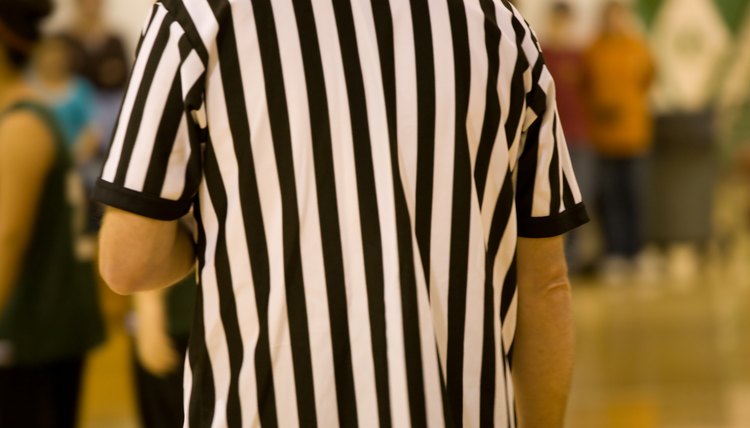Basketball Rules: Over & Back

Basketball rules and regulations are designed to control the play, officiating, equipment and overall procedures of a basketball game. While different leagues and organizations can enforce different rules, one of the most common rules is the “over and back” rule, or backcourt violation. The over and back rule is a floor violation that results in the defense being awarded the ball.
Requirements
The over and back violation is called when an offensive player touches back into the backcourt to retrieve a loose ball after he has moved into the frontcourt with both feet. If a ball handler crosses the half-court line with only one foot, he can move back into the backcourt to elude defenders.
Purpose
The purpose of the over and back rule is to keep the offense on its side of the court while controlling the overall flow of offensive plays. When an over and back violation is called, the defense is awarded the ball and a turnover is charged to the offensive team.
Outcomes
There are two possible outcomes of an offensive team losing the ball into the backcourt. The first is an over and back violation, meaning an offensive player is the first to touch the ball in the backcourt. The referees blow his whistle to stop the play and game clock, and the defensive team is awarded the ball and has a throw-in situation at the nearest designated spot to where the violation occurred. The other outcome is if a defensive player is the first to grab the ball. There is no violation and play continues with the team formerly on defense now on offense.
Considerations
At times, some leagues may change the over and back rule slightly to accommodate different age and ability levels. For example, many youth basketball leagues may restrict the over and back rule to help the offense.
References
Writer Bio
Based in Nebraska, Jeremy Hoefs began writing fitness, nutrition, outdoor and hunting articles in 2006. His articles have been published in "Star City Sports," "Hunting Fitness Magazine" and RutWear field journals, as well as on the Western Whitetail website. Hoefs graduated with a Bachelor of Science in exercise science from Nebraska Wesleyan University.
